Your bicycle’s tires might not be something you think about very often, but they have crucial implications for every aspect of your ride. Better understanding how your mountain, gravel, and road bike tire size is measured can help you fine-tune your equipment, and learning how tire size relates to performance can make you faster when it counts. What are the basics of bike tire size?
Bike tires are typically measured in two dimensions— diameter and width. The diameter measurement is an approximation of the tire’s total outside diameter including treads, and the width is a measurement of the approximate total width of the tire when mounted and inflated. For mountain bike tires these dimensions are expressed in inches, while a millimeter-based system called French sizing is used for road, gravel, and track. For example, a 29 x 2.25 mountain bike tire is about 29” in diameter and about 2.
25” wide, while a 700c x 25 road tire is approximately 700mm in diameter and 25mm wide.
This makes it pretty straightforward to fit a modern tire to a modern rim—a 700c tire will almost definitely fit a 700c road rim (we’ll explain that “c” later), and a 29” tire will likely fit a 29” mountain bike rim. But some obsolete or unusual sizes can be misleadingly labeled, and any tire’s nominal measurements (especially width) are really just approximations. Rim width and tire pressure can significantly influence the size of a tire when mounted and inflated, and tires often measure a bit larger or smaller when installed than the printed dimension would suggest.
To reduce confusion, most tires are also labeled with a second system of measurements called ISO (formerly known as ETRTO). The ISO measurement displays the tire’s nominal width in millimeters, followed by the diameter of the tire’s bead (the surface that actually attaches to the rim) in millimeters (ex: 25 x 622 is a common road tire). This measurement can help resolve any ambiguity about whether a tire will fit a particular rim, but as with other systems, the ISO measurement of a tire’s width is an approximation and may be impacted by pressure and rim width.
This measurement can help resolve any ambiguity about whether a tire will fit a particular rim, but as with other systems, the ISO measurement of a tire’s width is an approximation and may be impacted by pressure and rim width.
Nearly all modern road bikes use 700c wheels and tires. It used to be widely accepted that narrower tires were faster and 23mm was the standard width. But recent research has proven wider tires to be faster and more comfortable in most situations. As a result, 700c x 25mm and 700c x 28mm are now the most common road tire sizes; many riders prefer even wider widths of 30mm or 32mm. The limiting factor is usually the bike itself, with some frames unable to accommodate tires beyond a certain width. Most new road frames can at least fit up to 28mm tires but double-check your frame’s allowance before sizing up.
A few other less common wheel and tire sizes exist for road bikes. 650b (ISO 584) and the rarer 650c (ISO 571) are two examples, both sometimes used on bikes for smaller riders. The letter that follows the diameter measurement in French tire sizes originally delineated width, but it’s now mostly just useful to differentiate between similarly-named but incompatible sizes. For instance, a 650b tire will not fit on a 650c rim.
The letter that follows the diameter measurement in French tire sizes originally delineated width, but it’s now mostly just useful to differentiate between similarly-named but incompatible sizes. For instance, a 650b tire will not fit on a 650c rim.
It’s also important to understand the different types of mutually-incompatible road tires. Clinchers are most common; these are the familiar tires that seat into a walled rim around an inner tube. Certain clincher rims can also be used with tubeless tires, which use a liquid sealant in place of an inner tube. Finally, tubular tires are permanently sewn closed around an internal tube and are glued into a specially-made rim. All 3 of these tire types use the same sizing standards and terminology but are generally not interchangeable.
Tires are printed with a manufacturer’s recommended pressure range, and road riders used to think inflating their tires to the highest possible pressure was fastest. But with the move to wider tires has also come a trend towards lower pressure. The science of tire pressure is complicated, but wider tires require less pressure for the same volume of air than narrower tires, allowing for a more comfortable ride. Additionally, wider tires at lower pressures reduce bouncing and are actually faster on most surfaces than smaller, harder tires.
The science of tire pressure is complicated, but wider tires require less pressure for the same volume of air than narrower tires, allowing for a more comfortable ride. Additionally, wider tires at lower pressures reduce bouncing and are actually faster on most surfaces than smaller, harder tires.
It’s tough to make a generalized recommendation for pressure—riding conditions, your weight, and the tire’s size all play a part. But generally, the larger the tire and the rougher the surface, the lower the optimal pressure. With each 3mm increase in tire width, you can usually reduce pressure by 1 Bar (~14 psi). Also, tubeless tires can generally be ridden at lower pressures than tubed tires of the same size. Some tire and rim manufacturers have calculators on their websites that make personalized recommendations for pressure; these are a great starting resource to make your ride faster and more efficient.
Adaptive Training
Get the right workout, every time with training that adapts to you.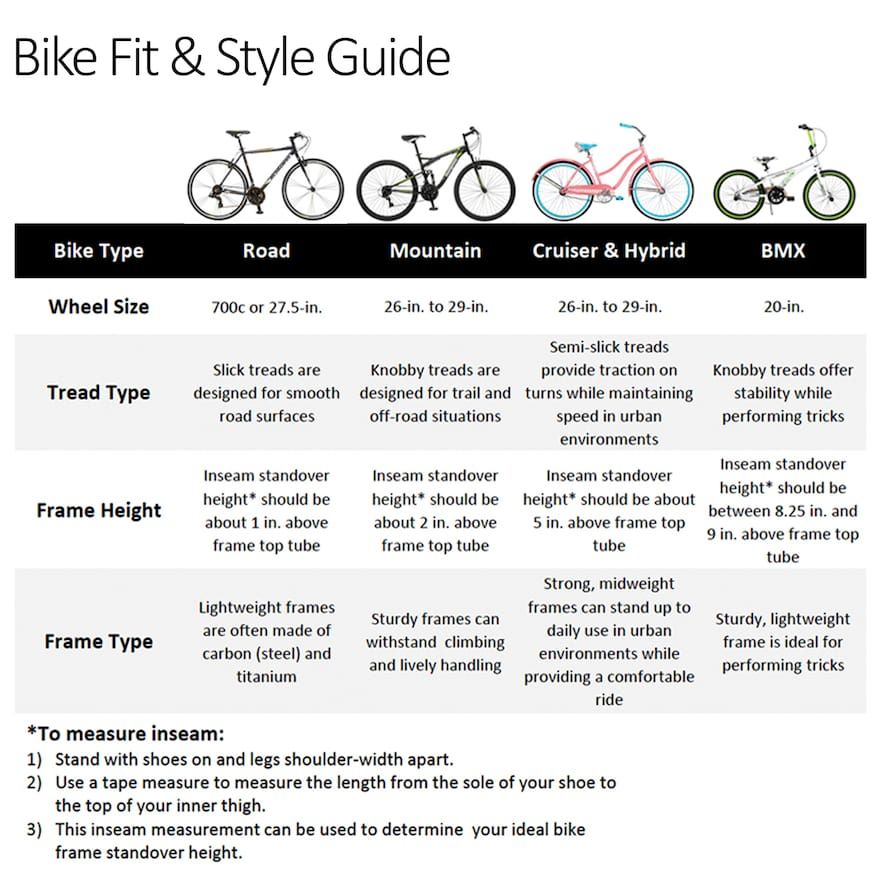
Check Out TrainerRoad
Mountain bike tires are measured in inches and are offered in 3 non-interchangeable diameters corresponding to common mountain bike wheel sizes. Most popular for high-end mountain bikes are 29” tires and wheels. Next come 27.5” setups, preferred by some riders who like smaller, slightly more maneuverable wheels. And finally, 26” wheels and tires used to be the standard, but are now found mostly on entry-level and kids’ bikes.
Tires at each of these diameters are available in a wide variety of widths, which riders select for the specifics of their discipline and terrain. Cross-country racers usually choose comparatively narrow tires ranging from 1.9” to 2.25” wide. Trail, all-mountain, and enduro bikes are normally equipped with wider tires between 2.25” and 2.4”, and downhill tires are even wider at 2.4” to 2.6”. Finally, fat bike tires are mounted on purpose-built rims and push the boundaries even further, sometimes measuring as wide as 5”. The specifics of tire choice are carefully considered by mountain bikers, with racers often choosing different widths and tread patterns depending on the course and conditions.
The specifics of tire choice are carefully considered by mountain bikers, with racers often choosing different widths and tread patterns depending on the course and conditions.
Interestingly, most mountain bike wheel sizes are actually the same diameter as road wheels—29” wheels are equivalent to 700c, while 27.5” are the same as 650b. But you wouldn’t want to put tires intended for one on a wheel intended for the other, as the rim’s width is dramatically different for road and mountain bikes and would interfere with the tire’s performance.
Tire pressure is a crucial concern in mountain biking. Small changes in pressure can dramatically impact performance and handling on the trail, and experienced mountain bikers regularly adjust pressure depending on terrain, conditions, riding style, and tire choice.
Because all of these variables are factors to consider, it’s nearly impossible to make a general recommendation for mountain bike tire pressure.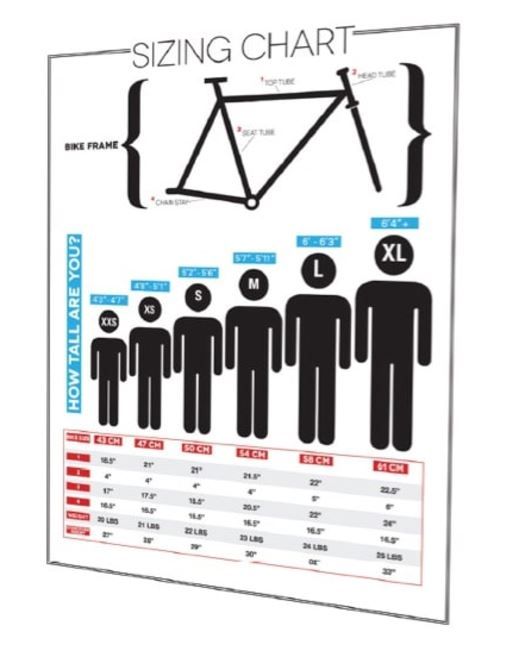 Online calculators can help suggest a starting pressure based on equipment, weight, and conditions, but in the end, it’s ultimately a matter of personal preference and learning from experience. A good strategy is to treat the first few rides on a new setup or in new terrain as experiments. Carry a digital gauge, start with pressure on the higher side, and gradually let a few psi out/ add some pressure back in as you ride to experiment with what works and feels best. Check and record your pressure when you find the sweet spot and use this as your starting point for future rides.
Online calculators can help suggest a starting pressure based on equipment, weight, and conditions, but in the end, it’s ultimately a matter of personal preference and learning from experience. A good strategy is to treat the first few rides on a new setup or in new terrain as experiments. Carry a digital gauge, start with pressure on the higher side, and gradually let a few psi out/ add some pressure back in as you ride to experiment with what works and feels best. Check and record your pressure when you find the sweet spot and use this as your starting point for future rides.
There are a few general principles to keep in mind when finding the right pressure. Typically, the larger your tire, the lower the optimal pressure. Tires with thinner casings require higher pressure, as do heavier riders. Rocky terrain may also necessitate higher pressure to avoid flats, while lower pressures can be used in smooth, grassy, or muddy conditions. Finally, some riders like to use tire inserts, which provide more flat protection and allow a few psi reduction in pressure.
Gravel, cyclocross, and track cyclists also choose specific tire sizes and pressures to optimize performance.
Cyclocross bikes use 700c road wheels, so cyclocross tires are all designed for this standard diameter. In the past, most serious cyclocross racers used tubular tires, but tubeless tires have become increasingly popular over the last few seasons. Tires at CX events have traditionally been allowed up to a maximum width of 33mm, and UCI-governed events still impose this limit. Non-UCI races often allow larger tires, such as the 38mm maximum width allowed at USA Cycling masters, collegiate, and single speed national championships. Many local events impose no size restrictions at all—check your race’s rules to know for sure.
Gravel bikes used to be repurposed cyclocross bikes, but with dedicated gravel equipment introduced over the last few years tire options have greatly expanded. Most gravel bikes use 700c wheels, but 650b wheels are occasionally used for especially technical trail riding and bikepacking. Most new gravel bikes have clearance for tires ranging up to at least 42 or 45mm width, and some allow for even wider tires. Virtually all gravel riders use tubeless tires.
Most gravel bikes use 700c wheels, but 650b wheels are occasionally used for especially technical trail riding and bikepacking. Most new gravel bikes have clearance for tires ranging up to at least 42 or 45mm width, and some allow for even wider tires. Virtually all gravel riders use tubeless tires.
Gravel tires all balance speed and efficiency with offroad traction. Narrower tires with minimal treads are fastest on hardpack and paved surfaces but offer poor grip in loose corners. Wider tires with more aggressive tread patterns are more capable on loose terrain but roll much more slowly on smooth or paved roads. Gravel riders choose the width and tread pattern that offers the best balance for their local terrain, but may significantly adjust their tire choice and pressure for different conditions.
Like road bikes, track bikes use 700c wheels. But unlike on the road where slightly wider and softer tires are usually faster, on a smooth track harder and narrower tires have an advantage.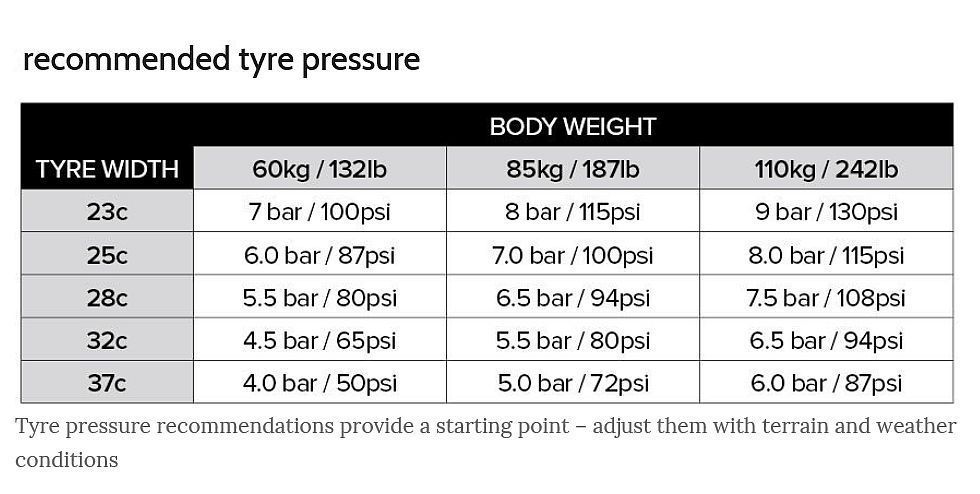 For this reason track racers still prefer 21mm – 23mm wide tubular tires inflated to very high pressures—usually 150 psi or more on indoor tracks. Racers on rougher outdoor tracks don’t inflate their tires quite this high, but they still use much more pressure than they would on the road, with relatively narrow tires offering little in the way of puncture protection.
For this reason track racers still prefer 21mm – 23mm wide tubular tires inflated to very high pressures—usually 150 psi or more on indoor tracks. Racers on rougher outdoor tracks don’t inflate their tires quite this high, but they still use much more pressure than they would on the road, with relatively narrow tires offering little in the way of puncture protection.
| Tire Size | Use/ Discipline | ISO Designation |
|---|---|---|
| 700c x 23mm – 32mm | Road/Track | 622 |
| 700c x 35mm – 50mm | Gravel and Mixed surface | 622 |
| 650b x 23mm – 25mm | Small road bikes | 584 |
| 650b x 45mm – 50mm | Gravel and Bikepacking | 584 |
| 26” x 2.1” – 2.3” | Cross Country MTB | 559 |
| 26” x 2.3” – 2.5” | Trail | 559 |
| 26” x 2.4” – 2.6” | Enduro/ Downhill | 559 |
27. 5” x 2.1” – 2.3” 5” x 2.1” – 2.3” | Cross Country MTB/ Gravel | 584 |
| 27.5” x 2.3” – 2.5” | Trail | 584 |
| 27.5” x 2.4” – 2.6” | Enduro and Downhill | 584 |
| 29” x 2.1” – 2.3” | Cross Country MTB | 622 |
| 29” x 2.3” – 2.5” | Trail | 622 |
| 29” x 2.4” – 2.6” | Enduro and Downhill | 622 |
bike tire pressurebike tire sizegravel bike tiresmountain bike tiresroad bike tires
Generally, bike tire sizes are indicated with two numbers that correspond roughly to the outside diameter of the tire and the width of the tire. These would usually be measured in inches (26", 27", etc.) or millimeters (650, 700, etc.).
While neither are exact measurements, every tire has its size printed or embossed on the outside near the brand name, just like your car's tires.
A standard road tire is 700c x 23mm, indicating a tire diameter of approximately 700mm and a width of 23mm. When shopping for road tires, you'll look for 700c x your preferred width, 23mm being the slimmest option and going up to 36mm. 650c: size used on some high-performance road and triathlon bikes, especially those designed for smaller riders.
Twenty-Seven inch was a size used on many older road bikes. It's not used by modern manufacturers, but because so many bikes were made for wheels and tires this size, these tires are still readily available
Twenty-Six inch is the most commonly used size for modern mountain bikes and is also used on many hybrid or utility bikes.
The 29er another popular size for mountain bike wheels and tires. It;s actually the same bead-seat diameter as 700c tires, but most 29" tires are simply too wide and tall to fit 700c wheels.
Making a comeback in mountain biking is the 650b. Modern mountain bike tires using this size may be labeled 650B or 27.5". It was also used for some older mountain bikes as well as French utility and touring bikes, and never fell completely out of use.
Tire sizing is additionally complicated by the fact that older bicycles often used some of these same size designations (particularly 26" and 27") for tires that are not compatible with these sizes (i.e., different ISO numbers / bead-seat diameters).
Check out the following for 20+ year old bike tires sizes explained.
While the first number, the diameter of the tire, is most important in identifying size, there's a little more to how tires are measured with a more globally unified approach.
Your bike's wheels are designed to work with tires with a very specific bead-seat diameter - that is, the diameter of the tire at the bead, which is the ridge at the edge of the tire that hooks into the wheel rim.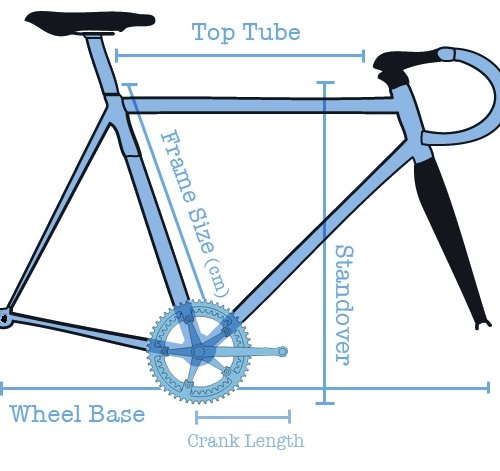
This bead-seat diameter is indicated by a very specific ISO (International Organization for Standardization) number that refers to the diameter, in millimeters, of the tire measured bead-to-bead.
For example:
The ISO number for a 700c tire is 622. Each ISO number corresponds to a more general number (like 700c or 26") that is used to indicate the tire's size on the packaging, etc.
The ISO number is almost always also indicated on the tire, in parentheses, with the tire's width indicated first, and then the ISO number.
For example, our 700c x 23mm tire would also be labeled with "(23-622)."
With the variety of measurement systems and bicycle tire size options, we have broken down some more common options in a bicycle tire size chart.
Get in touch with us if we can be of any help in figuring out what size tire you need! We carry a great variety of tires in common sizes, and also carry tires in old and hard-to-find sizes. Contact us at 1-800-682-0570 or [email protected]
Contact us at 1-800-682-0570 or [email protected]
About Us All About Gear Inches Bicycle Helmets Bicycle Lights Bicycle Pedals Bike Fenders Bike Seat Posts Bike Stems Chain Compatibility Common Tire Sizes COVID-19 Response Cyclocross Tires Grease, Lube, or Solvent? How To Write A Product Review Mountain Bike Road Tires Older 26 Inch Tire Sizes Older Tire Sizes Privacy and Security Racing/Performance Tires Returns/Exchange Policy Road Bicycle Wheels Road Bike Handlebars Shipping Sidi Cycling Shoes Tire and Tube Replacement Tire Size Chart Tire Tips Tire Width Tread Patterns Tube Types
More Articles...
Nikolaev bicycle shop "Sportek"
Published: 01/27/2017
Edited: 06/01/2021
Sooner or later, almost every cyclist faces the question of replacing the rubber on the wheel or the chambers for them.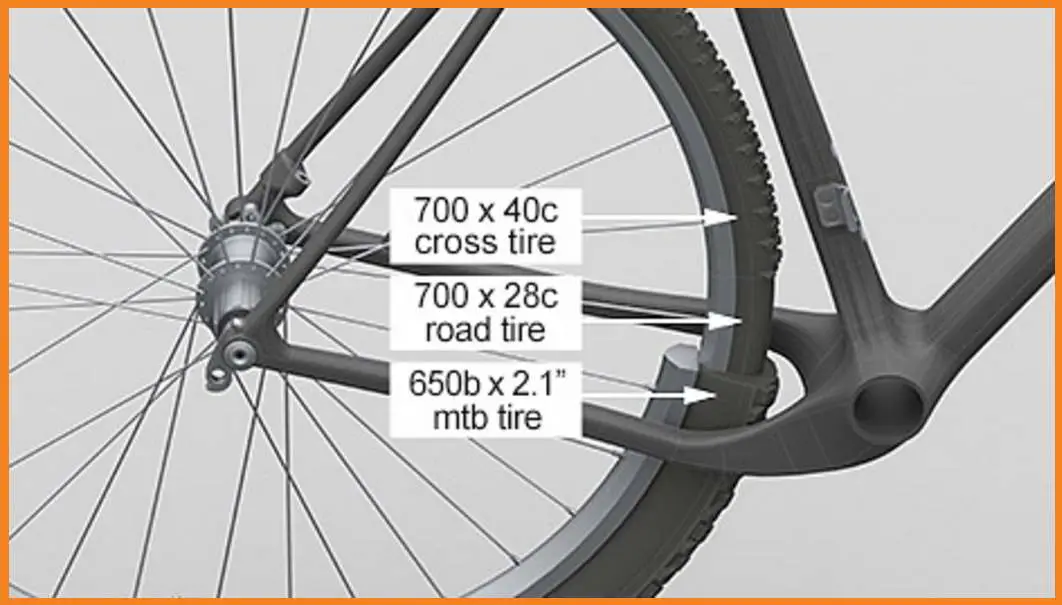
The easiest way, of course, is to look at the size of the tire currently installed on the bike (it is written on the side of it), and look for exactly the same. On some rims, their landing diameter and width are also written.
In life, everything is always a little more complicated and it often happens that the tire you like has a marking that is not entirely clear or does not match the marking on your rubber. Sometimes it is necessary to replace the old bicycle rubber, which has served for many years, with a more modern one.
What to do? You can’t put a tire on a bike over the Internet, but you don’t want to pay money just like that.
In this article, we will try to help you understand the markings on bicycle tires and find out which of them are interchangeable.
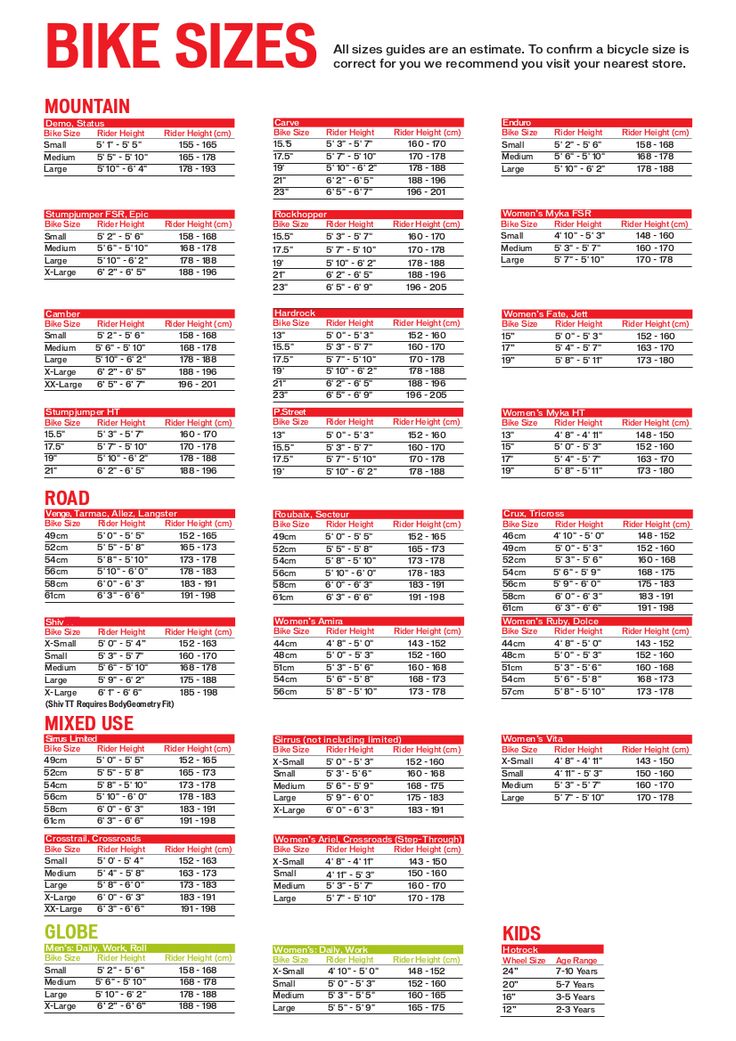
The first thing you need to know when choosing a tire is the size of the wheels. They are usually measured in inches, but sometimes in mm. There are not very many of them and the most common are 16, 18, 20, 24, 26, 27.5, 28, 29.
At the same time:
Further, what else you need to know is seat size (diameter) of the rim or BSD (English Bead Seat Diameter). It is the most important and determines the interchangeability of tires. If this number matches at the rim, tire, or tube, then that tire or tube fits those rims. And if the width of the new rubber can be changed, then the landing size will not change much.
If the size (numbers in mm) is written on the wheel (rim), for example, as in the photos above, they accurately indicate the fit size of the rim and its width, which is the main data for selecting the inner tube and tire for the wheel.
There are several types. The confusion in the designation of sizes began in the middle of the 20th century, and today Great Britain and France use their own designations for marking.
Previously, the sizing system was based on the outside diameter of the tires. It was measured in inches (24", 26", 28") or in millimeters (500, 650, 700, etc.).
Over time, this system lost its meaning, because different products with the same outer diameter wheels (together with the height of the tire) did not match the inner diameter (rim diameter) on which this tire was put on.There were also marketing moves of manufacturers, and the accuracy of translation and rounding of measurements in inches is lower than in millimeters. 0003
0003
To overcome these confusions and bring all sizes to the same standard, the International Organization for Standardization (ISO - International Organization for Standardization) has developed a universal system for designating tire sizes - ISO 5775 . This system was previously known as " ETRTO ". It was proposed by the organization of the same name: ETRTO (European Tire and Rim Technical Organization or in Russian: "European technical organization for rims and tires").

At first it was in the form of a number and a letter, for example, 700C - 700 the outer diameter of the tire is in mm. The letter determined the width from "A" - the narrowest to "D" - the widest.
Now the marking has acquired a more modern look.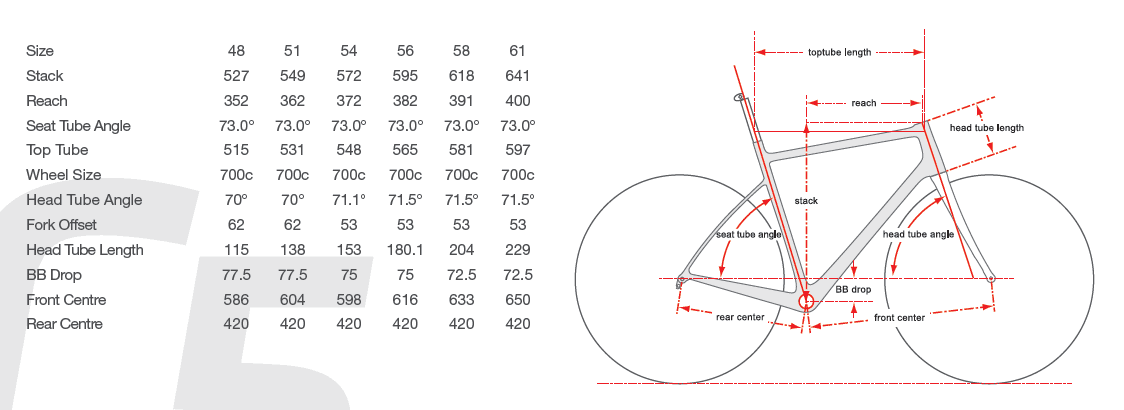 For example: 700 x 35C. Here the outer diameter of the tire is 700 mm and its width is 35 mm. The letter at the end indicates the inner (landing) diameter. In this case, "C" is 622 mm.
For example: 700 x 35C. Here the outer diameter of the tire is 700 mm and its width is 35 mm. The letter at the end indicates the inner (landing) diameter. In this case, "C" is 622 mm.
Note a very important nuance and paradox in inch sizes. Tire sizes can be specified as a decimal fraction, such as 26x1.75, or as a simple fraction, such as 26x1 3/4.
Mathematically, these fractions are equal: 1.75 = 1 3/4.
But, in terms of fit size and tire width in millimeters, this is not always the case, and the most unpleasant thing is that tires with such dimensions can be not interchangeable with .
And this circumstance should always be taken into account when purchasing a new bicycle tire.
In the table below, we have tried to collect the most common tire size designations in different systems and show their compatibility.
Perhaps not all dimensions encountered in life were taken into account, but if you have a tire with dimensions not listed in the table, try to estimate its dimensions based on similar nearest or similar dimensions.
| Rim bore size in mm according to ISO | Tire size in plain and decimal inches | French tire size | Tire size in mm according to ISO (width - bore) | Explanations |
| 681 | 22-681 | Sports track bike B-64 "Record" KhVZ (1958) | ||
| 642 | 28 x 1 5/8 x 1 1/2 | 700-28A | 28-642 | Obsolete size |
| 28 x 1 3/8 | 700-35A | 37-642 | ||
| 635 | 28 x 1 1/2 x 1 1/8 | 700-28B | 32-635 | American, English, Danish, Chinese, Indian road models |
| 28 x 1 1/2, 28 x 1 1/2 x 1 5/8 | 700-38B, 700B Standard | 40-635 | ||
| 28 x 1 5/8 x 1 1/2 | 44-635 | |||
| 630 | 27 x 7/8 | 22-630 | Road bikes, including older models | |
| 27 x 1 | 25-630 | |||
| 27 x 1 1/8 | 28-630 | |||
| 27 x 1 1/4 | 32-630 | |||
| 27 x 1 3/8 | 37-630 | |||
| 27 x all options | ||||
| 622 | 29 x all variants | 700C | This size was invented by marketers for tires with a bore diameter of 622 mm. They differ from 28 only in tire height. They differ from 28 only in tire height. | |
| 28 x decimal | 700C | For 622 mm tires | ||
| 28 x 3/4 | 700-18C 700x18C | 18-622 | ||
| 700-19C 700x19C | 19-622 | |||
| 28 x 3/4 | 700-20C 700x20C | 20-622 | ||
| 28 x 1 28 x 7/8 | 700-23C 700x23C | 23-622 | ||
| 28 x 1 | 700-25C 700x25C | 25-622 | ||
| 28 x 1 1/8, 28 x 1 5/8 x 1 1/8 | 700-28C 700x28C | 28-622 | ||
| 28 x 1.20 | 700-30C 700x30C | 30-622 | ||
| 28 x 1 3/4, 28 x 1.5 | 700x38C 700-40C | 40-622 | Road bikes: "Ukraine", "Minsk", "Sura", "Velta", "Aist" (111-321, 111-322) | |
| 28 x 1 1/2, 28 x 1 5/8 x 1 3/8 | 700C 700x35C 700x38C | 35-622 | Road bikes: "Ukraine", "Minsk", "Sura", "Velta", "Aist" | |
| 27 x 1 1/4, 28 x 1 5/8 x 1 1/4 | 700-32C 700x32C | 32-622 | Road and sports touring bikes, "Tourist", "Sport", "Sputnik" | |
| 28 x 1 5/8 x 1 1/4 | Obsolete Canadian designation F13 | |||
28 x 1. 4 4 | 700-35C 700x35C | 35-622 | Road bikes | |
| 28 x 1.5 | 700x38C 700-38C 700-40C 700x40C | 40-622 | ||
| 28 x 1 3/8 x 1 5/8 | 37-622 | |||
| 28 x 1.6 | 700-42C 700x42C | 42-622 | ||
| 28 x 1.6 | 700-44C 700x44C | 44-622 | ||
| 28 x 1 5/8 x 1 3/4 | 700-45C 700x46C | 45-622 | ||
| 28 x 1.75, 28 x 1 5/8 x 1 3/4 | 700-47C 700x47C | 47-622 | ||
| 28 x 2.00 | 700-50C 700x50C | 50-622 | ||
| 600 | 22 (23, 24, 25, 27, 28, 30)-600 | Old Soviet sports and track bikes | ||
| 599 | 26 x 1.25, 26 x 1.375 | 32-599 | Very old American light bicycles.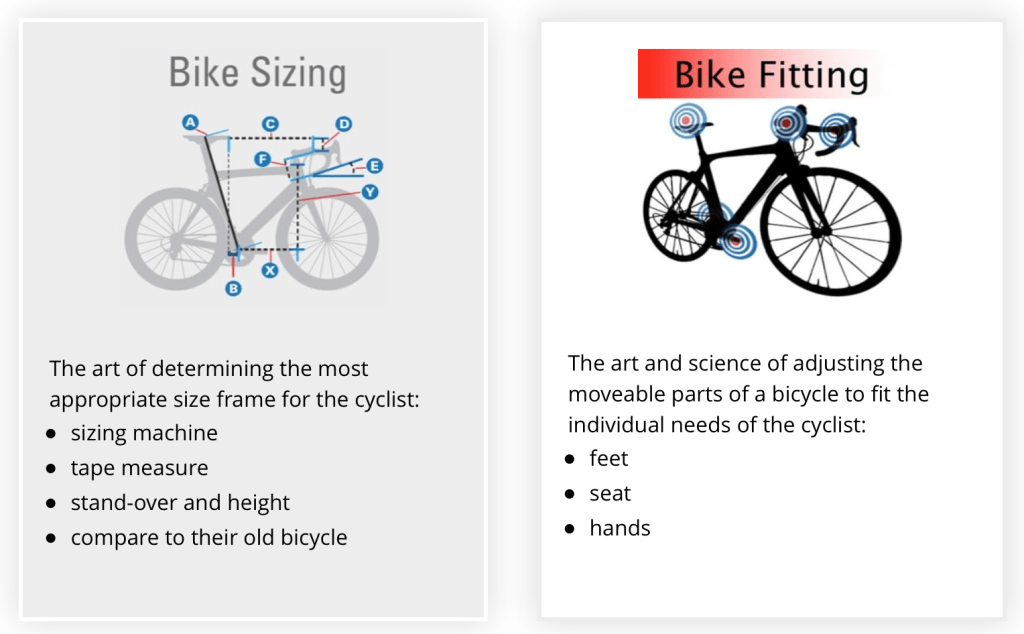 | |
| 26 x 1 7/8 | 47-599 | ZiF (Penza) 190-535 "Samson" | ||
| 597 | 26 x 1 1/4 (EA1) (England) | 32-597 | English old sports and club bikes. | |
| 26 x 1 3/8 (S-6) | 37-597 | Light bicycles of the American firm Schwinn. | ||
| 590 | 26 x 1 1/8 | 28-590 | Soviet bicycles ZiF (Penza) "Diana", "Prima", "Turn", "Relay", "Sura", "Breeze", "Temp" American and English 3 and 10 speed. | |
| 26 x 1 1/4 | 32-590 | |||
| 26 x 1 3/8 (E.A.3) (England) | 650A | 35-590 | ||
| 26 x 1 3/8 | 650-35A 650x35A | 37-590 | ||
| 26 x 1 5/8 | 44-590 | |||
| 587 | 700D | Old size on some GT models | ||
| 584 | 27.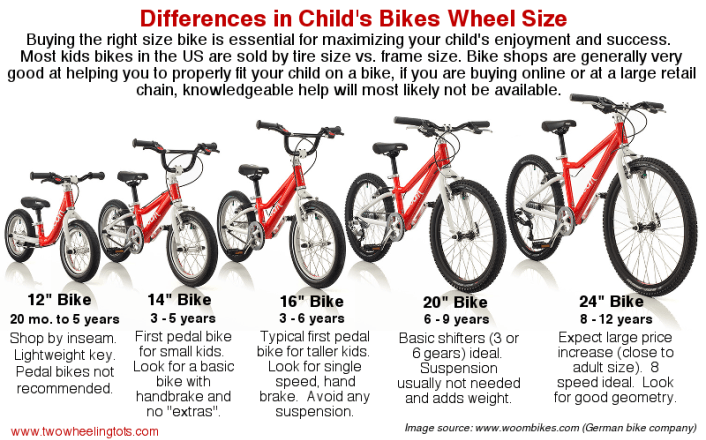 5 x 1.50 5 x 1.50 | 650x38B | 40-584 | French road bikes, touring bikes with cargo, tandems, some Raleigh (USA), old Schwinn mountain bikes |
| 26 x 1 1/2 | 650B | 37-584 | ||
| 27.5 x 1.5 | 40-584 | |||
| 27.5 x 1.65 | 44-584 | |||
| 27.5 x 1.75 | 47-584 | |||
| 27.5 x 2 | 52-584 | |||
| 27.5 x 2.1 | 54-584 | |||
| 27.5 x 2.25 | 57-584 | |||
| 27.5 x 2.3 | 60-584 | |||
| 27.5 x 2.4 | 62-584 | |||
| 27.5 x 2.8 | 70-584 | |||
| 571 | 26 x 3/4 | 650x20C | 20-571 | Triathlon, time trial, small road bikes, some French Peugeot bikes. |
| 26 x 7/8 | 650x23C | 23-571 | ||
| 26 x 1 | 650C | 23-571 | ||
26 x 1.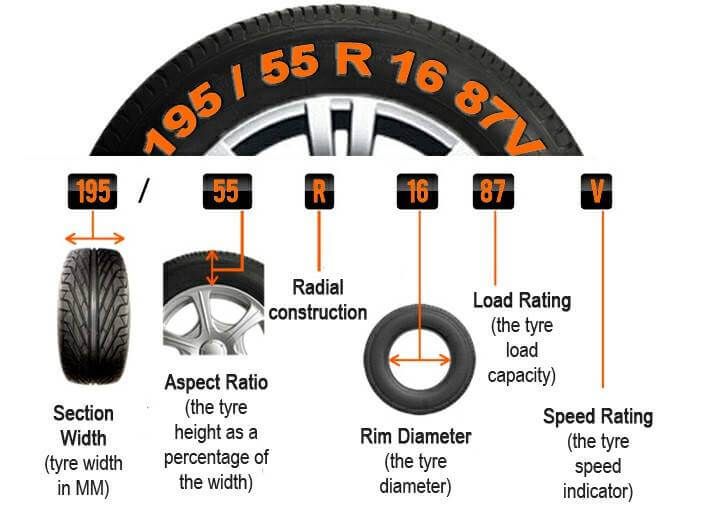 75 75 | 47-571 | |||
| 26x1 3/4 (S-7) | Road Schwinn | |||
| 559 | 26 x 1.0 | 25-559 | Most mountain bikes. Classic landing diameter for 26 wheels. | |
| 26 x 1.25 | 32-559 | |||
| 26 x 1.35 | 35-559 | |||
| 26 x 1.4 | 37-559 | |||
| 26 x 1.5 | 40-559 | |||
| 26 x 1.6 | 44-559 | |||
| 26 x 1.75 26 x 1.75 x 2 | 47-559 | |||
| 26 x 1.95 | 50-559 | |||
| 26 x 2.00 | 52-559 | |||
| 26 x 2.10 | 54-559 | |||
| 26x2.15 | 55-559 | |||
26 x 2.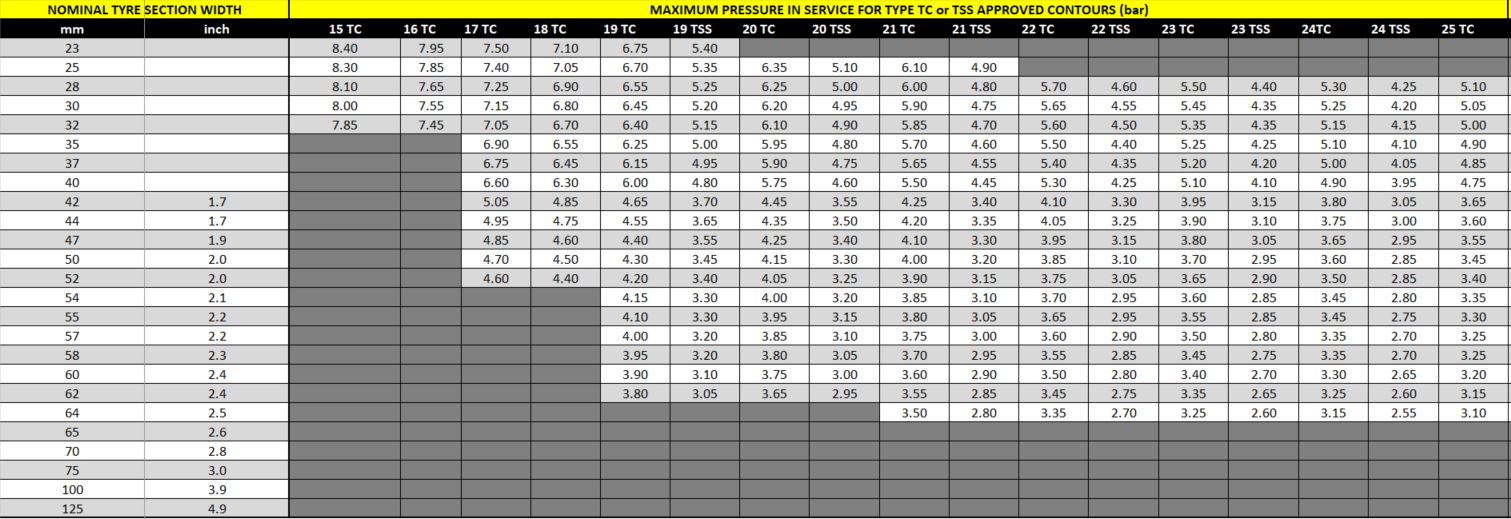 25 25 | 57-559 | |||
| 26 x 2.3 | 60-559 | |||
| 26 x 2.4 | 62-559 | |||
| 26 x 3.0 | 75-559 | |||
| 26x3.7 | 95-559 | |||
| 26 x 4.00 | 100-559 | |||
| 26x4.5 | 115-559 | |||
| 26x4.8 | 120-559 | |||
| 547 | 24x1 1/4 | English children's and American firm Schwinn | ||
| 24x1 3/8 (S-5) | Schwinn American children's bicycles | |||
| 540 | 24 x 1 1/8 | 600A | 28-540 | Children's English and European bicycles, most wheelchairs |
| 24 x 1 1/4 | 32-540 | |||
| 24 x 1 3/8(E-5), 24 x 1 3/8 A | 37-540 | |||
| 533 | 24 x 1 1/2 | 37-533 | "Salute", "Altair", "Ervi", "Eaglet", "Erelyukas", "Swallow" ("Kregzdute", "Kregzhdute" - Siauliai bicycle factory "Vairas" Lithuania). Be careful when replacing as not all 24" tires will fit 533 wheels. | |
| 531 | 24 x 1 5/8 x 1 1/2 | 44-531 | ||
| 520 | 24x1 | 25-520 | Road wheels for children's bikes | |
| 507 | 24 x 1.5 | 40-507 | Children's mountain. "Salute", "Altair", "Ervi" | |
| 24 x 1.75 | 47-507 | |||
| 24 x 1.95 | 50-507 | |||
| 24 x 2.0 | 51-507 | |||
| 24 x 2.125 | 54-507 | |||
| 24 x 2.25 | 57-507 | |||
| 24 x 2.35 | 60-507 | |||
24 x 2.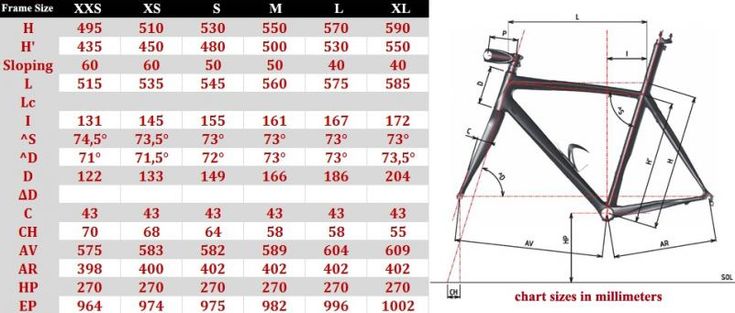 5 5 | 62-507 | |||
| 24 x 2.6 | 65-507 | |||
| 24 x 2.75 | 70-507 | |||
| 24 x 3.0 | 75-507 | |||
| 501 | 22 x 1.0 | 25-501 | European bikes | |
| 22 x 1 1/4 | 32-501 | |||
| 22 x 1 3/8 | 37-501 | |||
| 490 | 550-28A | 28-490 | European Road Kids Bikes | |
| 22 x 1 3/8 x 1 1/4 | 550-32A | 32-490 | ||
| 22 x 1 3/8 | 550-35A | 37-490 | ||
| 489 | 22 x 1.0 | 25-489 | European bikes | |
| 22 x 1 3/8 | 37-489 | |||
| 22 x 1 3/8 x 1 1/4 | 40-489 | |||
22 x 2. 00 00 | 50-489 | |||
| 457 | 22 x 1.75 to 2.125 | Children's bicycles | ||
| 451 | 20 x 1 1/8 | 28-451 | BMX for light riders, light children's bikes, some ligerades. Wheels on some types of wheelchairs. | |
| 20 x 1 1/4 | 30-451 | |||
| 20 x 1 3/8 | 37-451 | |||
| 445 | 20 x 1 1/4 | 30-445 | "Schoolboy" (old Soviet models) | |
| 440 | 500-28A | 28-440 | European folding, children's bikes | |
| 500-35A | 37-440 | |||
| 20 x 1 1/2 | 500-38A | 40-440 | ||
| 438 | 20 x 1 3/8 | 37-438 | European bikes | |
| 20 x 1 3/8 1 1/2 | 40-438 | |||
| 432 | 20 x 2 1/2 | 40-432 | European bikes | |
| 428 | 20 x 2.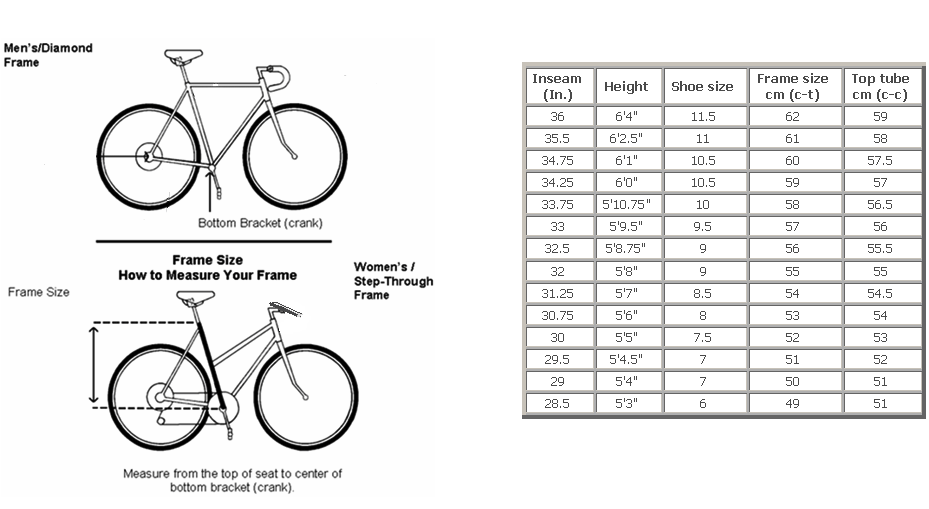 00 00 | 54-428 | European bikes | |
| 419 | 20 x 1 3/4 | Schwinn American children's bicycles | ||
| 406 | 20 x 1.25 | 32-406 | Most BMX bikes, kids and folding models. "Venta" (folding model 175-811). "Stork" (folding, model 113-322) "Tisa-2", "Cross", "KAMA", "DESNA", "Schoolnik", "Velta Kama", "Dubisa" (Siauliai bicycle factory), "Eureka" and other folding and old Soviet models. Folding "Mustang" | |
| 20 x 1.35 | 35-406 | |||
| 20 x 1 3/4 20 x 1.5 | 40-406 | |||
| 20 x 1.75, 20 x 1.75 x 2 | 47-406 | |||
| 20 x 1.95 | 50-406 | |||
| 20 x 2.00 | 54-406 | |||
20 x 2.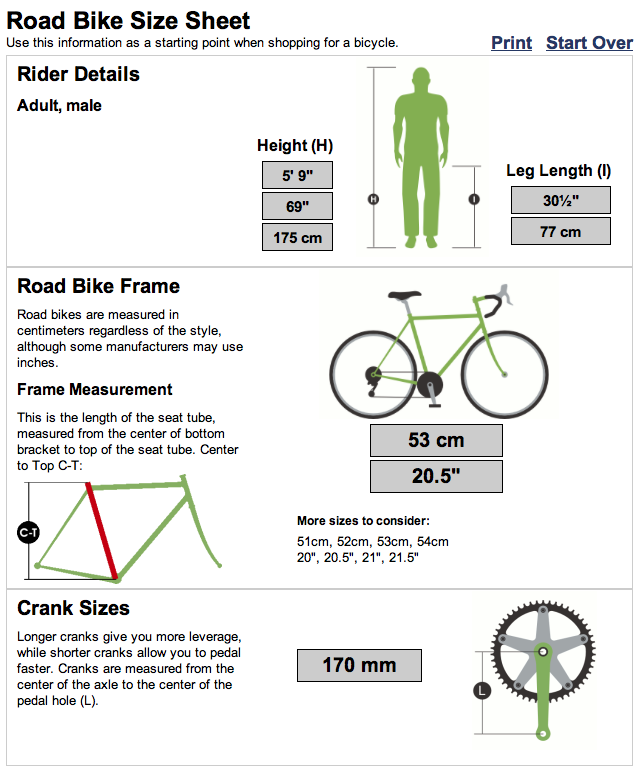 125 125 | 57-406 | |||
| 20 x 2.35 | 60-406 | |||
| 20 x 2.5 | 62-406 | |||
| 20 x 2.6 | 65-406 | |||
| 20 x 2.75 | 70-406 | |||
| 20 x 3.0 | 75-406 | |||
| 390 | 18 x 1 1/8 | 450-28A | 28-390 | Children's European bikes |
| 18 x 1 3/8 | 450-35A | 37-390 | ||
| 450-55A | 55-390 | |||
| 387 | 18 x 1 1/2 | 37-387 | Children's European bikes | |
| 369 | 17 x 1 1/4 | 32-369 | Bicycles Alex Moulton | |
| 355 | 18 x 1 1/8 | 28-355 | Children's bicycles | |
18 x 1. 25 25 | 32-355 | |||
| 18 x 1.35 | 35-355 | |||
| 18 x 1.5 | 40-355 | Birdy folding bikes. | ||
| 18 x 1.6 | 42-355 | Children's bicycles | ||
| 18 x 1.75 | 47-355 | |||
| 18 x 1.95 | 50-355 | |||
| 18 x 2.0 | 54-355 | |||
| 18 x 2.125 | 57-355 | |||
| 349 | 16 x 1 1/8 | 28-349 | Old Moulton, Brompton and other folding bicycles, ligerade front wheels, children's bicycles. | |
| 16 x 1 1/4 16 x 1.25 | 32-349 | |||
| 16 x 1.35 | 35-349 | |||
| 16 x 1 3/8 | 37-349 | |||
| 340 | 400-30A | 28-340 | Children's European bikes | |
| 16 x 1 3/8 x 1 1/4 | 400-32A | 32-340 | ||
| 16 x 1 3/8 | 400-35A | 37-340 | ||
| 16 x 1 5/8 | 400A | 44-340 | ||
| 335 | 16 x 1 3/8 | Children's Polish bicycles | ||
| 330 | 16 x 1 1/2 | 400-38B | 40-330 | Children's bicycles |
| 317 | 16 x 1 3/4 | Schwinn American children's bicycles | ||
| 305 | 16 x 1.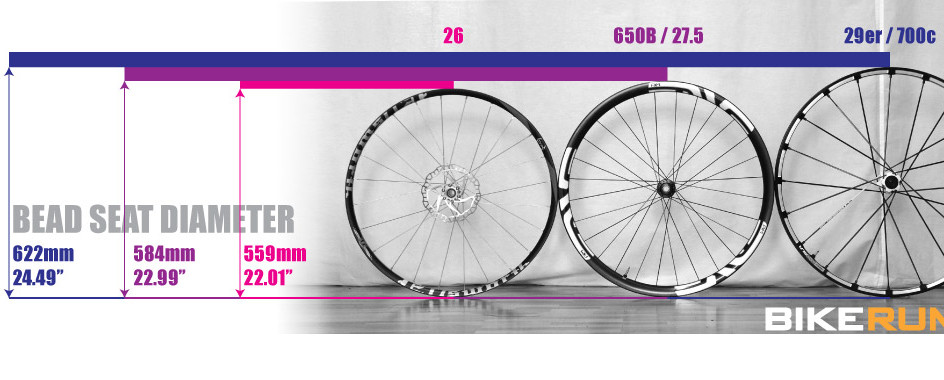 5 5 | 40-305 | Children's bicycles, folding, touring and some ligerades. | |
| 16 x 1.75 | 47-305 | |||
| 16 x 1.95 | 50-305 | |||
| 16 x 2.0 | 54-305 | |||
| 16 x 2.125 | 57-305 | |||
| 16 x 2.5 | 62-305 | |||
| 298 | 14 x 1 1/4 | 350-32A | 32-298 | Carriages, children's bikes, balance bikes |
| 288 | 14 x 1 3/8 | 350A, 350-35A | 37-288 | Children's bicycles, balance bikes |
| 14 x 1 5/8 | 350-38A | 40-288 | ||
| 14 x 1 5/8 x 1 3/8 | 350-42A | 44-288 | ||
| 14 x 1.75 | 47-288 | |||
| 279 | 14 x 1 1/2 | 350-38B | 40-279 | Children's bicycles, balance bikes |
| 254 | 14 x 1.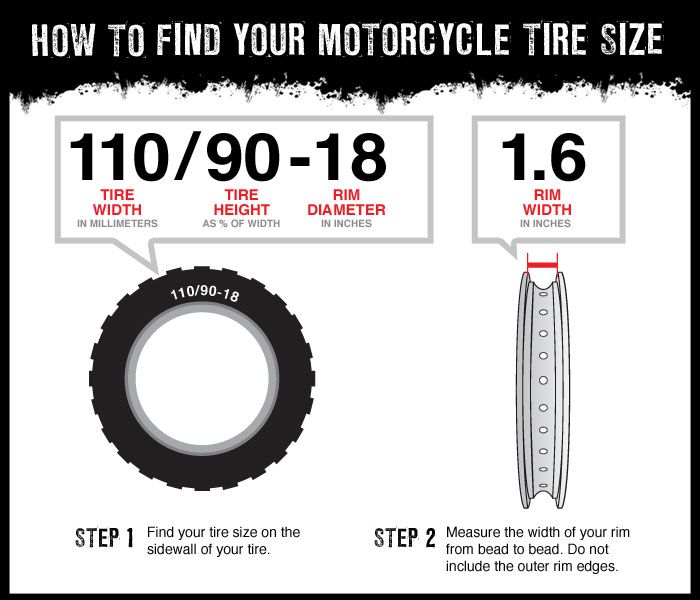 5 5 | 40-254 | Children's bicycles, balance bikes | |
| 14 x 1.75 | 47-254 | |||
| 14 x 2 | 54-254 | |||
| 239 | 12 1/2 x 1 3/8 x 1 1/4 | 300-32A 300x32A | 32-239 | Children's bicycles, balance bikes |
| 205 | 12 1/2 x 2 1/4 | 56-205 | Children's bicycles "KVD", balance bikes, sometimes suitable for baby strollers ("Dutik" tires) | |
| 203 | 12 x 1.75 12 1/2 x 1.75 12 1/2 x 1.9 | 47-203 | Small children's bicycles, balance bikes, baby carriages | |
| 12 x 1.95 | 54-203 | |||
| 12 x 2.0 | 50-203 | |||
| 12 x 2.125, 12 1/2 x 2 1/4 R | 57-203 | |||
| 12 1/2 x 2 1/4 | 62-203 | |||
| 176 | 55-176 | Tires for tricycles, scooters, balance bikes for small children, wheelbarrows and carts, prams | ||
| 152 | 10 x 2 | 54-152 | ||
| 137 | 8 x 1 1/4 | 32-137 |
 29 tires differ from 28 only in height.
29 tires differ from 28 only in height. Tire width selection is more flexible than rim diameter.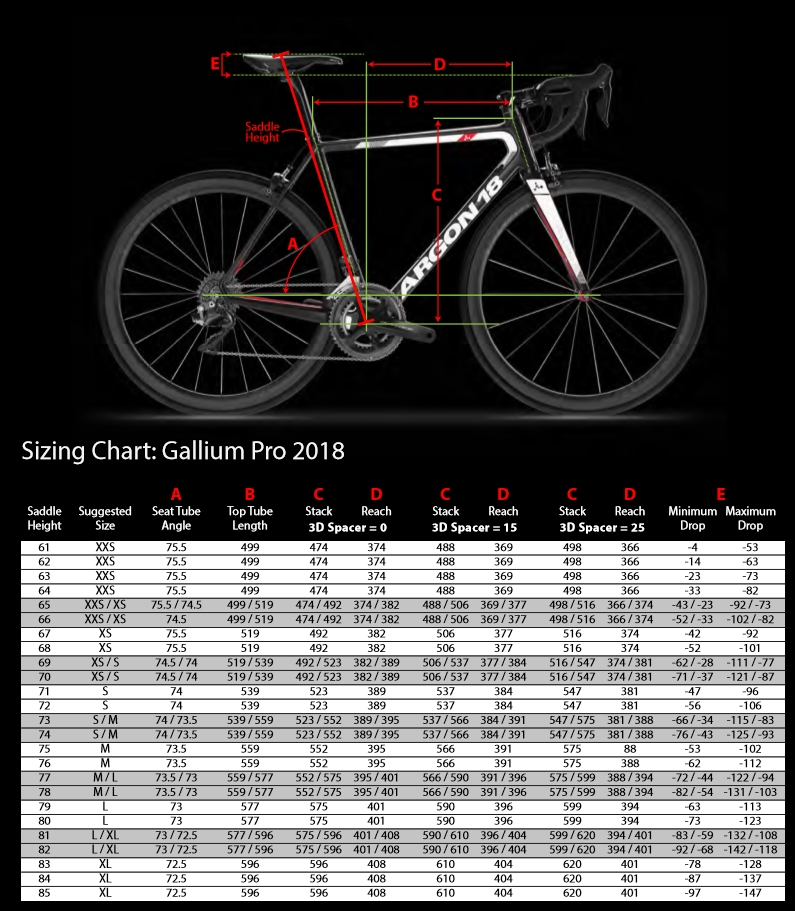
Rim widths are measured and marked in millimeters as shown in the figure at the beginning of the article.
How to measure the width of the rim is described in a separate article here.
| Rim width in mm | Tire width in mm and inches | Bicycle type |
| 13 | 18 - 25 mm (1") | road and cyclocross models |
| 15 | 23 - 32 mm (1" - 1.25") | |
| 17 | 25-37 mm (1" - 1.5") | light cross-country and hybrid models |
| 18 | 28 - 44 mm (1.1" - 1.75") | heavy cross-country and hybrid models |
| 19 | 28 - 60 mm (1.1" - 2.35") | MTB (mountain bikes, mountain bikes) |
| 20 | 28 -47 mm (1.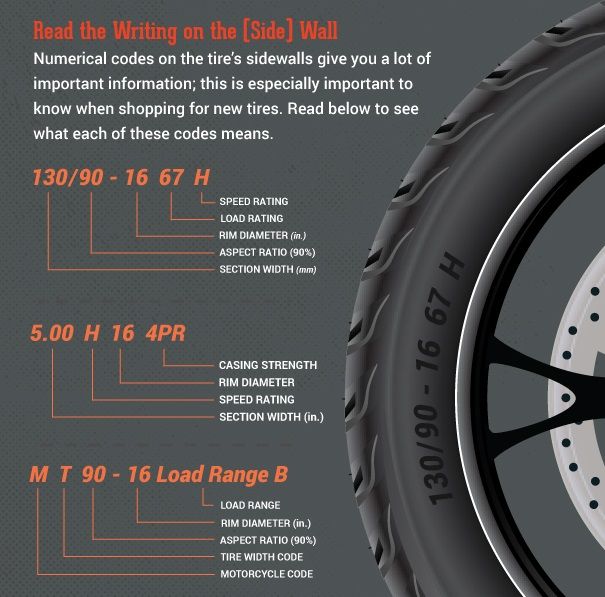 1" - 2") 1" - 2") | cycling and light extreme |
| 21 | 35 - 50 mm (1.4" - 2") | |
| 23 | 40 - 50 mm (1.5" - 2.1") | extreme cycling |
| 25 or more | 44 - 57 mm (1.75" - 2.25") | |
| 32 | 75 mm (3") and over |
This table is a guideline for an average bike. Use it not as a dogma, but as a guideline for selection.
Some manufacturers give their own tables for the tires they produce, according to which they need to be selected for their wheel.
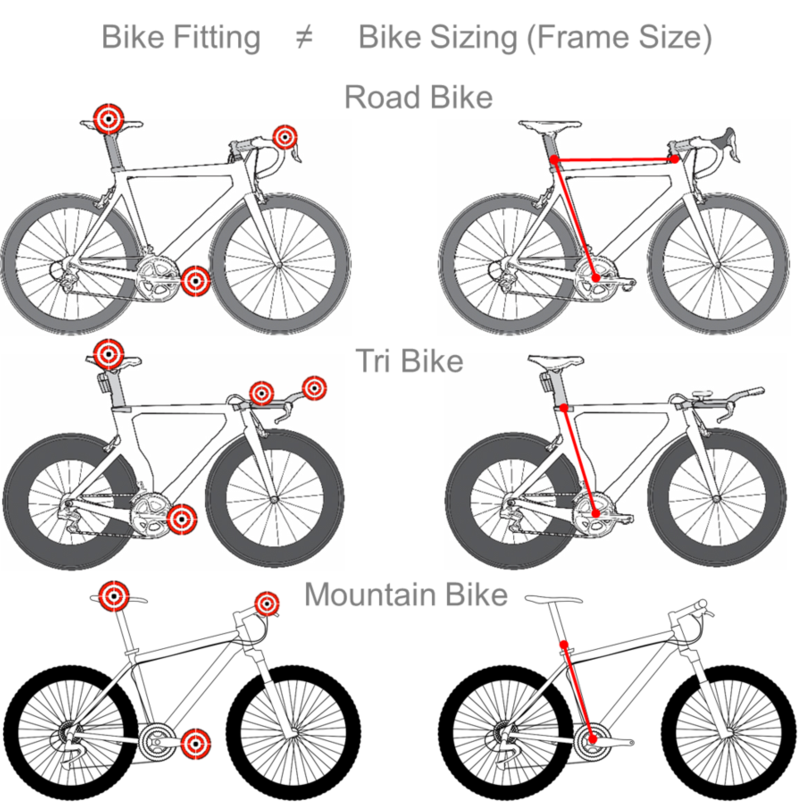
The tire width affects rolling and grip. The wider - the better the grip, cornering control, but the worse the roll.
It is considered optimal if the width of the tire is 1.5-2.1 times wider than the inner width of the rim. It is possible and 2.5 times, but this is already an amateur.
The tire-to-rim width ratio affects the tire's cornering behavior. Too wide tires mounted on a narrow rim can simply break. will have a pear-shaped profile.
Further, if the wheel is equipped with toothy rubber, then the side spikes on the tread will not be where they should be for sure grip in the turn.
With wide tires on a narrow rim, the side studs will be too high and will not hold properly in the turn.
On narrow tires with a wide rim, the spikes will be from below and with a good slope, the bike will ride on the sidewall, and she is bald.
Below is the famous table compiled by Georg Boeder of tire and rim width recommendations
fractional inches) here.
Comments (131)
x
Every bicycle wears out a little as it is used. This also applies to bicycle tires, which are very important to change in a timely manner. To do this, you need to know the tire markings. It is necessary to be guided by the parameters set by the manufacturers. It should be borne in mind that the wheel, or rather its size, directly affects the parameters of a bicycle tire.
How to determine parameters
EC
Most modern manufacturers use the European marking according to the ETRTO classification. This abbreviation stands for European Tire and Rim Technical Organization.
The following indicators apply here:
By the way, Soviet-made bicycle tires had reverse double markings. The inner diameter of the tire was in first place, the width of the chamber was indicated in the second place.
To date, the marking adopted in Europe is considered the most accurate and convenient in comparison with the rest.
Dimensioning in inches
This application of indicators also consists of two numbers listed through a multiplication sign or a fraction. For example, if the values are 28 x 1.4, then 28 equals the outer diameter of the tire, and 1.4 is its intended width in inches.
French
French marking may have the following meaning: 700 x 35C. Local manufacturers put down numerical values for width, inner diameter and outer diameter. Therefore, in this case, the figure 700 is the approximate value of the outer diameter. In turn, the designation "C" determines the inner diameter. The indicator decreases with the movement of the letter to the beginning of the alphabet. Therefore, "A" is the smallest, and "D" is the largest. In the example shown, the value "C" defines an internal diameter of 622 mm. This system of recording values is not applicable to all bicycles (for example, not used for mountain bikes).
How to determine the bore diameter?
So, if you need a bicycle tire, you should initially select the diameter of the wheel rim.
Diameter size 28 and 29 equals 622 mm. These two tires differ only in height and thickness.
27.5-inch wheels require a bore diameter of 584 and 590 mm.